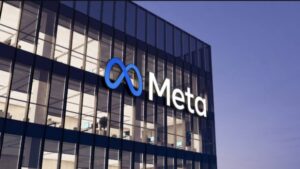
Meta, the parent company of Facebook, Instagram, and WhatsApp, is making an unprecedented bet on artificial intelligence. In a move that underscores the escalating global AI arms race, the tech giant has announced plans to invest hundreds of billions of dollars into building next-generation AI-focused data centers codenamed Prometheus and Hyperion. This ambitious project is part of Meta’s strategy to reclaim its position at the forefront of AI innovation after setbacks with its Llama 4 model.
🔍 The Vision Behind Prometheus and Hyperion
These new AI data centers aren’t just typical server farms. They are being designed to support massive-scale AI models, including Meta’s upcoming versions of its open-source Llama AI language models, AI assistants, AR/VR environments, and possibly even its metaverse infrastructure.
Prometheus: Focused on raw AI processing power, Prometheus will be optimized for training and fine-tuning large language models (LLMs) at scale.
Hyperion: Aimed at real-time deployment, Hyperion will serve low-latency, always-on AI experiences for billions of users across Meta’s platforms.
🧠 Why This Matters: Rebounding from Llama 4 Delays
Earlier in 2025, Meta’s Llama 4 model was expected to rival or even surpass OpenAI’s GPT‑4 and Google’s Gemini models. However, delays in release and deployment allowed competitors to pull ahead. Meta’s leadership under Mark Zuckerberg believes that foundational AI infrastructure is the missing piece in its long-term strategy. By controlling both the AI models and the computational backbone behind them, Meta aims to eliminate bottlenecks and leapfrog competitors in both performance and scalability.
🌐 Scale and Impact
The scale of this investment is unmatched in Meta’s history, surpassing even its controversial spending on the Metaverse. Industry insiders estimate:
Each data center may consume more power than a small city.
Thousands of custom AI chips and GPUs will be deployed.
Meta may rely heavily on clean energy sources and nuclear partnerships to meet the demand.
It will create tens of thousands of jobs in construction, engineering, and software development
🧩 Strategic Objectives
1. Reassert AI Leadership
Meta wants to lead not just in consumer AI, but also in foundational research and infrastructure, positioning itself alongside or above OpenAI, Google DeepMind, and Anthropic.
2. Enable On-Device AI & Agents
The infrastructure will support smarter on-device agents and AR/VR integration, critical to Meta’s future smart glasses and XR projects.
3. Advance Open-Source AI
With Llama 3 and Llama 4 focused on open-source accessibility, Meta could democratize access to powerful model something its competitors have hesitated to do.
🚨 Risks and Challenges
Regulatory scrutiny: With governments increasing oversight of AI capabilities and data usage, Meta could face restrictions or delays.
Environmental impact: The energy consumption of hyperscale AI data centers will come under pressure from climate activists unless offset by green alternatives.
Execution risk: Even with billions invested, technical setbacks like those seen with Llama 4 could hinder progress or cause cost overruns.
🔮 What’s Next?
The Prometheus and Hyperion data centers are expected to come online in phases starting late 2026. Meta will likely use them not only to power its next-gen AI models but also to embed AI deeper across Facebook, Instagram, Threads, WhatsApp, and the metaverse.
With this investment, Meta is not just reacting to the AI boom it’s attempting to shape the infrastructure and standards of AI’s future.
